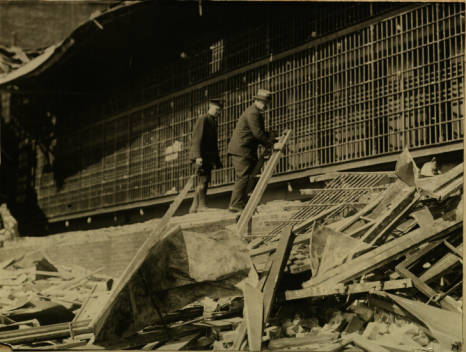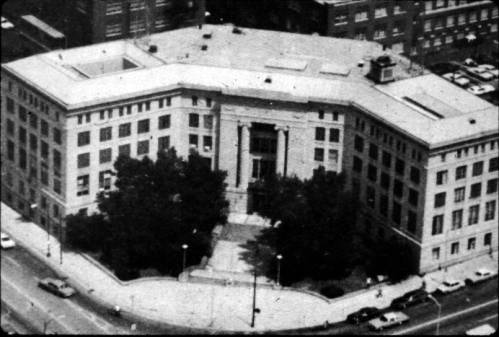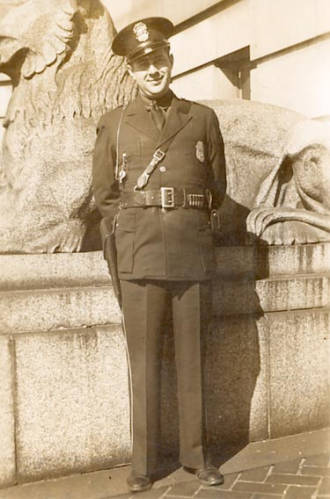While the flooding that plagued West Columbus for the better half of a century has remained on the collective memory of the community, many folks have forgotten about another natural disaster – a tornado that tore through the Sullivant Avenue workhouse, killing two prisoners and injuring eight others.
The disaster was dubbed the 1929 Rye Cove, Virginia tornado outbreak. On a national level, it resulted in approximately 42 deaths and 323 injuries from Oklahoma to Maryland. The category-three tornado passed through West Columbus at about 3 p.m. from the Galloway area to Franklinton.

When the workhouse was struck by the twister, its destructive winds ripped down a cell block on the building’s oldest wing. Men who were sitting in their jail cells had no place to take cover and were killed or crushed by brick, mortar and steel.
Efforts to locate victims were led by Columbus Fire Chief Allen Nice and local firefighters. There were also reports of some prisoners aiding firefighters in digging through the rubble to rescue the injured. The search posed its own risks, as one firefighter and a police secretary were injured while clearing debris.
The men killed were 38-year-old Derrill Devore and 47-year-old George Washington. Both men were being held on charges of intoxication, with Devore having arrived at 10:30 a.m. that morning. Washington was serving out a $10 fine for public drunkenness.
Six of the prisoners injured had to be hospitalized. These men were Otto Mallot, Frank Flay, Elmer Cox, Harry Thacher, Mile Morrissey and Harry Love. They suffered fractured skulls, broken limbs and other internal injuries.
“All of the prisoners caught in the shower of debris were in for misdemeanors and traffic law violations, while the more serious offenders, locked securely in their cells, escaped injury,” one journalist wrote.
The Circleville Herald reported there were a total of 217 men being held in the old portion of the city prison. Other media outlets later reported a total of eight prisoners were injured and eight others escaped in the chaos.
“Tons of brick and mortar were loosed upon a score of 200 prisoners that occupied the west wing of the ‘U’ shaped building. About 10 hours after the storm, when police had made a thorough check of the prisoners, they had accounted for all but eight. These, it is believed, fled in the excitement,” reported the Wilmington News-Journal.
Some additional prisoners initially vanished, but returned later and told authorities they only wanted to visit their families and assure them of their safety.
Police officials had to transfer 90 male and 15 female prisoners to the Franklin County Jail the same night; the prisoners kept in the east wing for secured since that portion of the workhouse escaped damage.
Franklinton had lost one of the last bases of government to remain west of the Scioto River. The workhouse was damaged beyond repair. Only a portion of the cell block’s walls remained standing, but they were later knocked down for safety.

The city has been working on the construction of a new headquarters downtown, at the area of Water Street (present-day Marconi Boulevard) and Gay Street. The storm forced city officials to hurry and finish the building, which opened March 1930.
Until the destruction of its facility May 2, 1929, the Columbus Division of Police operated out of Franklinton. The Columbus Police Headquarters and Workhouse was located at 515 Sullivant Avenue, at the corner of McDowell Street.
Today, it’s the site of the Dodge Park and Recreation Center. The city park was named in remembrance of long-time park and recreation director, Mel Dodge, when he retired after 30 years with the department.
Construction on what locals called “the old workhouse” began Jan. 26, 1896. The building initially started as a jail, but expanded to function as police headquarters from 1920 to 1930. Columbus officials demolished the building on Aug. 31, 1931.
Sean V. Lehosit is a freelance journalist and local history writer. He is the author of Images of America: West Columbus, which was released earlier this year by Arcadia Publishing.


